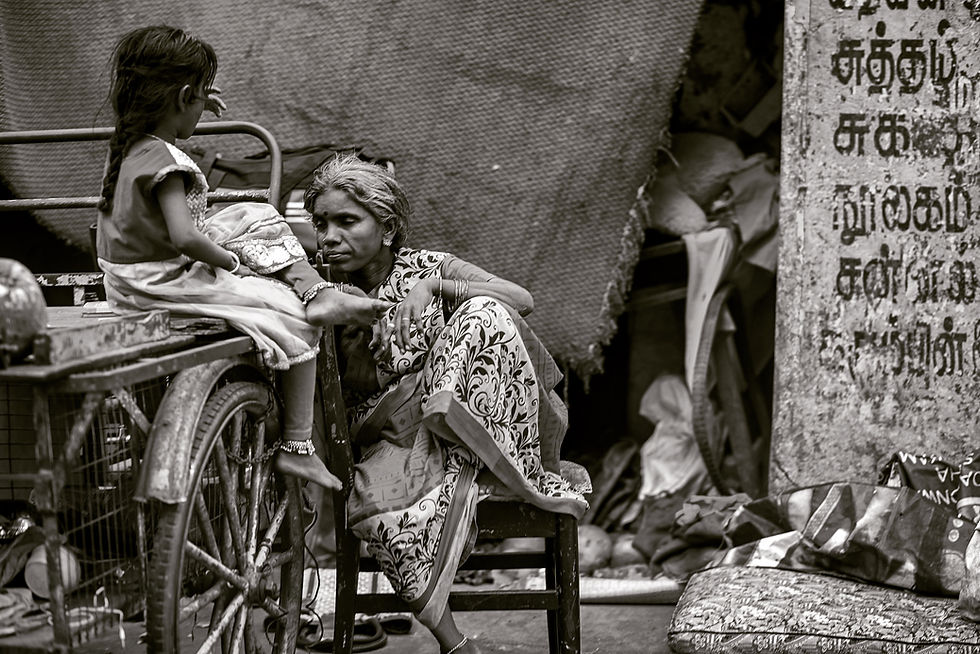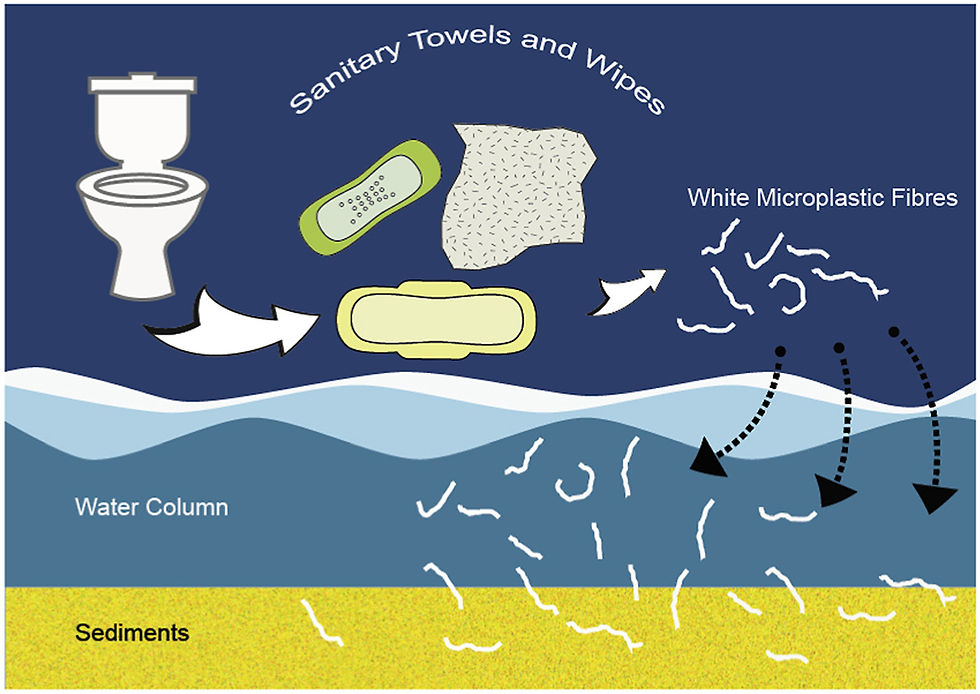The Dignity of Menstruation - a Human Right or a Burden?
About half of the world’s population menstruates for a good part of their lives. On average, healthy individuals spend around thirty years of their lives having a monthly flow – a process as natural as growing a beard. And yet, instead of being a source of pride and evidence of entering adolescence worthy of celebration, menstruation has been considered shameful, impure, and in various temporal and geographical contexts, even toxic. The topic has been considered taboo for so long that some even believe the origin of the word ‘taboo’ comes from the Polynesian word ‘tapua’, meaning both ‘sacred and forbidden’ and ‘menstrual flow’.
Throughout history, women have used a variety of methods for dealing with their blood flow at ‘that time of the month’. The earliest records point to ancient Egyptian medical texts where the use of tampons made of papyrus was utilized to stem the flow of menstrual blood. Other ancient civilizations, like the Greeks, Chinese, and Native Americans used lint, sand, moss, and sea sponges because of their naturally absorbent qualities. In the modern era, female hygiene products have evolved from unused pieces of clothes or rags to menstrual belts, and then to contemporary manufactured products like super absorbent pads, tampons with applicators, or cups (VOXAPOD® Editorial Team, 2022).

Image 1. Garcia, 2020. Women’s march in Berlin. 8th March 2020
An exhibition of personal care products at the Smithsonian museum of science and medicine sheds light not only on what these objects used to look like but also on the attitude towards the topic. The Smithsonian is the largest museum in the world, hosting 154 million items in more than 19 different museums, 21 libraries, nine research centers, and even a zoo. However, the collection of female hygiene products is small, and from the museum's website, it becomes clear that prior to 1970, little, if any, importance was given to this aspect of human life. Many items were not preserved since they were not considered valuable. Another point made is the euphemism of “feminine hygiene”, which helps society avoid naming body parts, and indicates the normalized discomfort associated with the subject of menstruation (Feminine Hygiene Products, n.d.). This phrase, however, does more than provide a socially acceptable code name. It implies and instills an image of a woman's body as unclean and impure.
Regardless of the method used, menstruating women commonly held a special place during the time of their periods in almost all cultures and religions. As Chrisler points out, there have always been many superstitions about menstruation. Consequently, these led to restrictions imposed on women’s behavior during their monthly menses. Some of these myths originating in Europe, Asia, Africa, Australia, and the Americas include: drops of menstrual blood on the ground or in a river kill plants and animals; wells run dry if a menstruating woman draws water from them and men. become ill if they are touched by or use any objects that have been touched by a menstruating woman. It is even said that beer turns sour if a menstruating woman enters a brewery and beer, wine, vinegar, milk, and jam go bad if touched by a menstruating woman.
Even though they may sound incredulous to the educated mind, these superstitions are the foundation upon which contemporary beliefs that menstruating women shouldn’t bathe, swim, do heavy housework, eat or drink certain foods, or participate in public life are based (Chrisler, 2011).

Image 2. Martin, L. (2019). n.d.
Today, it is internationally accepted that menstruation and its connection to human dignity, are intrinsically related to human rights. Yet, there are many obstacles through which more than half of the menstruating population of the world has to go through to keep that dignity (Rodriguez, 2021a). Some of these difficulties are connected with the superstitions previously mentioned. For example, in western parts of Nepal, India, and Ethiopia, women on their period are not allowed to cook food and must sleep outside of their homes. They often end up sharing a shelter with livestock or staying in temporary huts. In other areas of the world, women are prohibited from washing or bathing, thus preventing them from managing their health and personal hygiene.
Other types of hurdles are caused by taboos such as "menstruation should not be discussed publicly" (UN Population Fund). Following limitations of this sort can lead to overlooking legislation, ignorance, discrimination, and period poverty. Women with low income may struggle to afford menstrual products, pain relief medication, and underwear, especially in countries where these items are taxed as regular or luxury products, instead of essentials (Buchholz, 2020). The ‘tampon tax’ can vary significantly from state to state, with the leading nations being Hungary and Sweden at 27 and 25 percent respectively. However, it has to be pointed out that in some countries, such as Australia, Canada, Colombia, India, Jamaica, Kenya, Namibia, Nicaragua, Nigeria, Tanzania, Lebanon, Malaysia, South Africa, and Rwanda, a policy of zero taxation on these products has been implemented (Rodriguez, 2021a).
There is a rising awareness of period poverty, and the list of places where one can find menstrual products for free is getting longer every year (Rodriguez, 2021b). In some cases, this is true for the whole country, like in Scotland or New Zealand. In other places, there are campaigns for free products in public schools, museums, and various other public spaces, for example in New York, Seoul, and some regions of France.

Image 3 Cristina, O. (2020). n.d.
A quick look at the development of female hygiene products, their advertisement, and the revenue these products generate highlights a couple of interesting facts.
First of all, advertisements and marketing campaigns can have a massive impact on social acceptance and the alteration of social norms. Decades ago, when menstrual pads were first mass-produced, women were so reluctant to ask for them at drugstores that shop assistants were advised to leave the packets on the counter. That way, clients would get what they needed and leave money in return. Fast forwarding to the present, ads for sanitary products are everywhere. Women and girls are not ashamed to say that they are having ‘that time of the month’. Commercials have become more and more daring and direct. While it was once forbidden to use the word "period" in them, the color red is now considered acceptable (GiveHer5, 2019).
Meanwhile, brand giants such as Kotex, Tampax, and OB, innovators and some of the first mass producers of disposable pads and tampons, have become universally known and recognizable worldwide. The revenue of global feminine hygiene products was estimated at 37.4 billion U.S. dollars in 2018 and is expected to reach 52 billion U.S. dollars next year (Statista, 2022).

Image 4. Srinivasan, V. (2018). n.d.
It seems that sales have never been better. However, with the convenience of disposability comes the burden of pollution. A study by Ó Briain et al. (2020), discovered that “two billion single-use menstrual products are flushed down the toilet each year, and tampons, pads, and applicators generate 200,000 tonnes of waste per annum in the UK alone" (Wen, 2020). These products end up being a considerable source of white microplastic fibers in the environment. Due to public demand in recent years, both large companies, and newly founded enterprises, have jumped on the sustainability bandwagon. The humble menstrual cup, which was invented back in the 30s, has experienced a revival and is finally becoming part of the mainstream. It is safe for the environment, easy to use, affordable, and durable, as it is made out of silicone.

Image 5. ÓBriain et al.(2020) The role of wet wipes and sanitary towels as a source of white microplastic fibres in the marine environment.
In terms of minimizing ecological impact, increasing sustainability, and the omnipresence of environmentally friendly products, the public could ask for much more from manufacturers. As Ó Briain et al. (2020) note, producers do not adequately indicate the exact composition of the sanitary pads, which are usually made of 90 percent plastic. And even though the market share of sustainable and biodegradable alternatives is increasing, single-use products are still the most prevalent and preferred ones.
Perceptions and norms about menstruating people in societies have changed dramatically in the last 50 years. This is due to feminist movements and activist groups working to raise awareness about inequality and human rights. However, there is still a long road ahead until all menstruating human beings are treated with kindness, dignity, and respect.
References
Buchholz, K. (2020, May 28). Women Pay High Tax Rates for Period Supplies. Statista Infographics. https://www.statista.com/chart/18194/sales-tax-rate-on-feminine-hygiene-products-in-selected-countries/
Chrisler, J. C. (2011). Leaks, Lumps, and Lines. Psychology of Women Quarterly, 35(2), 202–214. https://doi.org/10.1177/0361684310397698
Feminine Hygiene Products. (n.d.). Smithsonian Institution. https://www.si.edu/spotlight/health-hygiene-and-beauty/feminine-hygiene-products
GiveHer5, T. (2019, May 14). Sanitary Products and Periods : The Last 50 Years of Advertising. A Period Blog. https://www.giveher5.org/blog/2019/05/13/sanitary-products-and-periods-the-last-50-years-of-advertising/
Menstruation and human rights - Frequently asked questions. (n.d.). United Nations Population Fund. https://www.unfpa.org/menstruationfaq
Ó Briain, O., Marques Mendes, A. R., McCarron, S., Healy, M. G., & Morrison, L. (2020). The role of wet wipes and sanitary towels as a source of white microplastic fibres in the marine environment. Water Research, 182, 116021. https://doi.org/10.1016/j.watres.2020.116021
Rodriguez, L. (2021, June 28). The Tampon Tax: Everything You Need to Know. Global Citizen. https://www.globalcitizen.org/en/content/tampon-tax-explained-definition-facts-statistics/
Rodriguez, L. (2021b, October 1). 20 Places Around the World Where Governments Provide Free Period Products. Global Citizen. https://www.globalcitizen.org/en/content/free-period-products-countries-cities-worldwide/
Statista. (2022, February 2). Sales value of the global feminine hygiene market 2018 & 2023. https://www.statista.com/statistics/825019/sales-value-of-the-feminine-hygiene-market-global-and-in-the-us/
VOXAPOD® Editorial Team. (2022, January 3). The History of Menstrual Products. VOXAPOD®. https://voxapod.com/blogs/journal/the-history-of-menstrual-products
Visual sources







Menstruation should never be a burden, and having access to necessary products and support is crucial for women’s health and well-being. Additionally, this app can help women track their menstrual cycles, making it easier to manage symptoms and take charge of their health. It’s time to break the stigma and ensure every woman has the tools she needs.